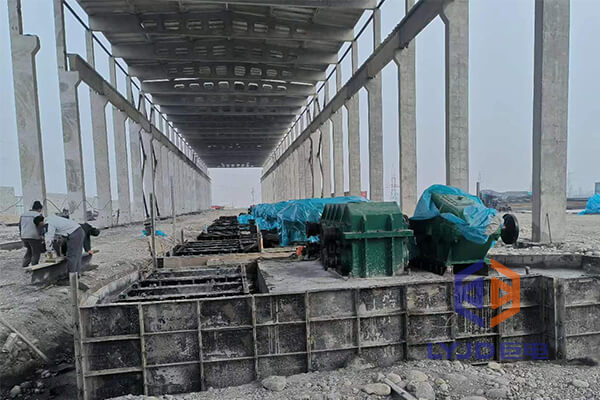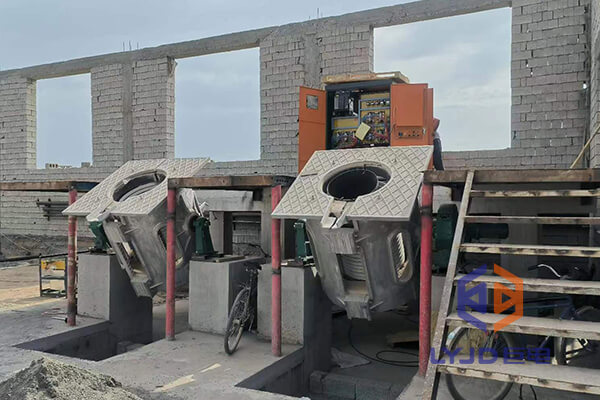Investing in a steel rolling mill plant requires careful consideration of the economic factors involved. One crucial aspect is understanding the return on investment (ROI) and forecasting potential outcomes. In this article, we will delve into steel rolling mill plant cost, focusing on ROI analysis. By gaining insight into these aspects, we can make informed decisions and maximize their returns.
To analyze the steel rolling mill plant cost systematically, we have to consider something, including capital expenditure, such as land acquisition, plant construction, machinery, and equipment; and operational expenses, such as raw materials, labor, energy, maintenance, and overhead costs. Let’s talk one by one.
To estimate the land area of a steel rolling mill plant, we need to count multiple factors, such as the factory's production capacity, process flow, equipment quantity and size, plant structure, etc.

Determine the production scale: Based on the production capacity of the rolling mill (such as the number of billets or steel products produced annually), the required production workshop scale can be roughly determined. Generally speaking, the larger the production scale, the larger the land area required.
Understand the process flow: The process flow of a steel rolling mill includes multiple links such as raw material preparation, heating, rolling, and finishing. Each link requires corresponding equipment and facilities. Understanding the process flow helps determine the land area required for each link.
Determine the quantity and size of equipment: Based on the production scale and process flow, the quantity and size of the various equipment and facilities required can be determined, and the floor space required for them can be calculated.
Consider the factory structure: The workshop of a steel rolling mill is usually a steel structure or concrete structure, and a reasonable factory structure needs to be designed based on equipment layout and process requirements. When estimating the land area, the footprint of the factory structure needs to be considered.
Reserve development space: Considering possible future production expansion or technology upgrades, a certain amount of space can be appropriately reserved when estimating the land area.
The raw materials and processing costs for producing steel bars are the main factors that constitute their costs.

Normally, we use scrap steel to produce steel bars. Then the cost of raw materials is mainly the cost of scrap steel. According to market conditions, the current scrap steel price is approximately US$300 per ton.
In addition, steel bar processing fees are also one of the important costs of producing steel bars. Processing fees include raw material costs and management fees, among which processing costs account for the largest proportion, about 70%. The processing fee will be affected by various factors such as region and processing method, and is generally between $70 and $110.
Therefore, the raw materials and processing cost is less than $450. However, the actual cost may vary due to market price fluctuations.
The energy consumption of a steel rebar production line will vary due to different production processes. Here we assume that scrap steel is used to produce steel bars.
Scrap steel needs to be melted in a medium frequency induction melting furnace. Then a continuous caster will cast the liquid steel into steel billets. At last, the continuous rolling mills will roll the steel billet to steel bars. After a rough calculation, the energy consumption of producing 1 ton of steel bars by this continuous casting and rolling production process is about 800kW·h. Multiply this data by the local electricity unit price to get the energy cost.
Of course, in some areas, electricity is much more expensive than fossil fuels, such as natural gas or oil. Therefore, in these areas, you can change the induction melting furnace to a gas-fired/oil-fired melting furnace to reduce the energy cost.

In the production line of steel bars, the largest cost is labor. Generally speaking, a steel bar production line requires 30-40 workers. The wages of workers in different positions vary greatly, and labor prices vary in different regions. Therefore, the labor cost needs to be estimated by ourselves based on the specific local conditions.
To ensure the whole production line running normally, daily maintenance is necessary. Routine maintenance of steel bar production lines includes many aspects, such as equipment cleaning, lubrication, inspection and repair, etc. The cost of these maintenance tasks varies depending on the size of the line, type of equipment, and manufacturer. The specific maintenance cost depends on several factors, such as the model of the equipment, its age, the size of the production line, and the maintenance schedule.
To reduce maintenance costs and ensure the normal operation of the equipment, it is recommended to formulate a reasonable maintenance plan, conduct regular equipment inspection and repair work, and replace worn parts promptly. In addition, using appropriate lubricants and materials and ensuring their quality and suitability are also important measures to reduce maintenance costs.
When it comes to steel rolling mill plant return, it is easy to analyze. We just need to figure out the price of the steel bar and the production capacity (It is obvious). So, there is no need to say more.
However, what we should keep an eye on is the price trends of the steel bars. So, we need to forecast market demand and pricing, including analyzing market trends, demand-supply dynamics, and competitive landscape affecting steel products, etc.
ROI analysis and forecasting are necessary when considering investments in steel rolling mill plants. By thoroughly evaluating the economics, conducting comprehensive cost analyses, forecasting market demand, and implementing risk mitigation strategies, we can make informed decisions and maximize their returns. With careful planning and strategic execution, steel rolling mill plant investments can yield favorable financial outcomes in the long term.
Please send us your request and we reply to you with in 24 hours.
Submit Request